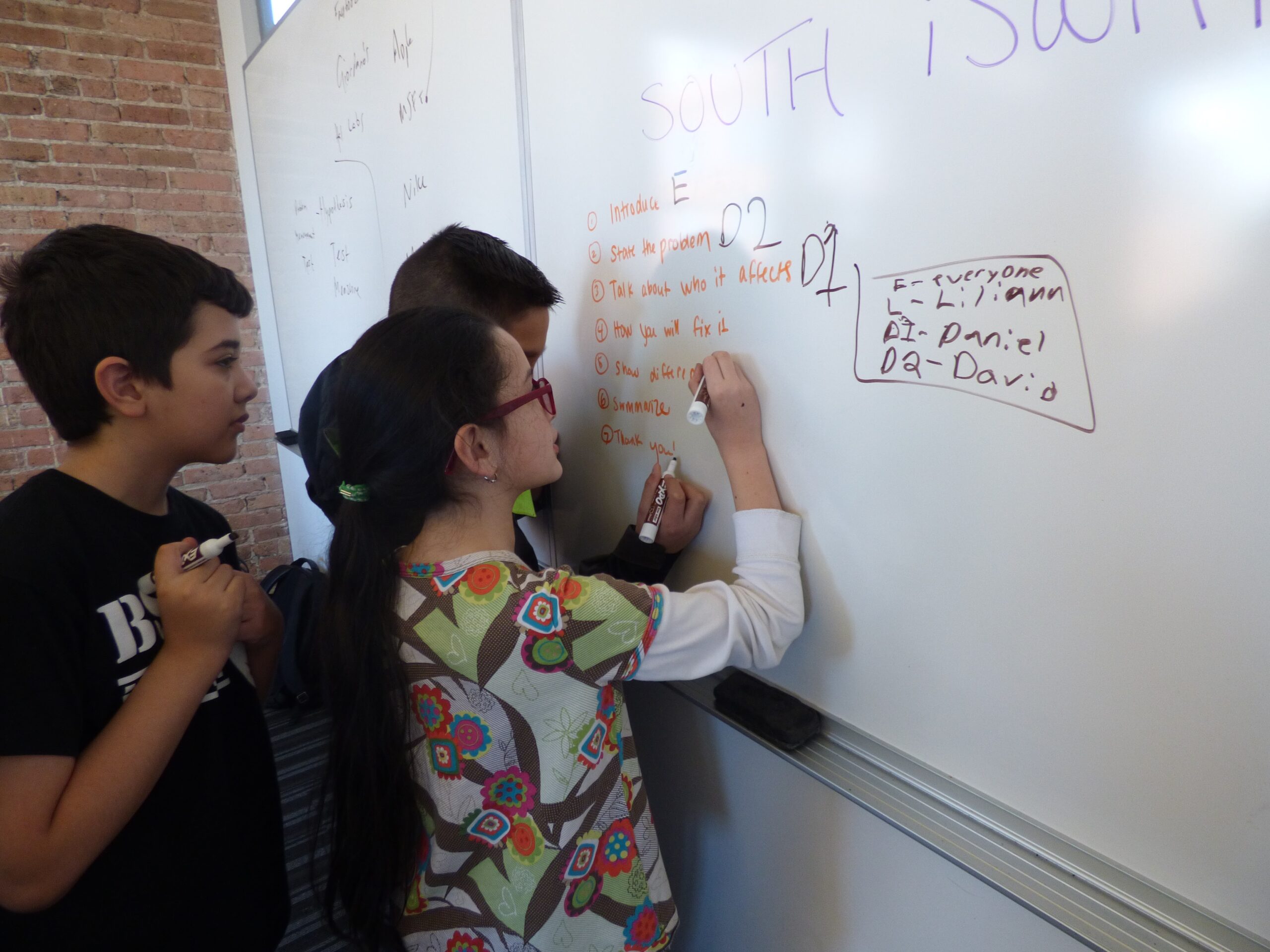In 2015, the bipartisan Every Student Succeeds Act signaled the end of one-size-fits-all instruction. The new legislation urged districts to embrace project based instruction aligned to academic standards and 21st century skills.
While experts agree that a hands on learning approach to core standards leads to significant student growth, even the most innovative districts can struggle to design research projects that are differentiated to meet the needs of every learner. Luckily, the vast majority of successful project based learning activities share a set of key characteristics that educators can replicate in the classroom and across a district.

1. Essential Question
Student projects should be framed by an essential question that asks students to respond to a difficult or complex question relevant to their interests or community. “Will Salmon go extinct in my lifetime?” “How does Google make money?” and “Should Taylor Swift stream her music on Spotify?” are all examples of open-ended questions that spark student interest and allow for multiple answers. Some students may become frustrated as they attempt to form a nuanced response to an open-ended question, particularly if their conclusions differ from those of their classmates.’
Before introducing a new essential question to your class or district, remind students that there is often more than one way to respond to a complex issue, and ask students to acknowledge the possibility that their final project may contradict opinions they held prior to conducting research.
2. Sustained Inquiry
Project based, hands on learning occurs over weeks and, in some cases, months. When conducting research around an essential question, students should utilize a variety of primary and secondary sources. Many students find research that occurs outside of their classroom, library, or computer screen to be especially meaningful.
By speaking to experts, visiting sites of historical or scientific experience, or utilizing new tools and technology, students engage with the world around them while gaining the information they need to develop a well-researched response to an essential question. Asking students to seek out and evaluate a variety of resources, sustained inquiry helps students to develop their digital citizenship and critical thinking.

3. Authenticity
Allowing educators to relate academic standards to student interests and aspirations, hands on learning is an especially effective way to engage older students who might otherwise be disengaged from the classroom. Projects that ask students to collaborate with industry experts or solve a problem in their community lend context and urgency to content mastery.
4. Student Voice and Choice
When they have the agency to plan and execute a project that addresses a real local or global issue, students can take responsibility for their education and gain confidence in their ability to make a difference in the world. Students should be allowed to determine the topic and final form of their project and encouraged to use outside knowledge and skills to synthesize their research. When students are given the opportunity to direct their own learning, they’re more likely to look forward to class and invest in their work.
5. Feedback and Revision
If they’re to be prepared for postsecondary success, today’s students need to know how to work with their peers to give and receive constructive feedback. After students complete a first draft of their project, they should participate in a writing workshop or a one on one revision session with a classmate. To ensure that all students benefit from thoughtful, generative feedback, teachers should instruct students on peer review best practices and provide students with a rubric they can use to evaluate student work.
6. Public Product
Whether they’re submitting their report to an academic journal, showing their video in a student film festival, or pitching their startup idea to a panel of venture capitalists, students are motivated to produce stronger, more purposeful work when they know that their project will have a meaningful impact outside of the classroom. By submitting their work to an outside audience, students may encounter a number of postsecondary or extracurricular opportunities, and the hands on learning they complete in the classroom could lead to internships, publishing credits, and mentorship.
Through project based, hands on learning, educators can ensure that all students are set up for postsecondary success, regardless of student access to tutoring, after school activities, and college counselors. Project based learning allows students to discover their untapped talents and interests.
Online resources like eSpark inspire student engagement and a lifelong love for learning with games and hands on activities that students love. Try it today for free to see how technology in the classroom can impact your students’ education.



